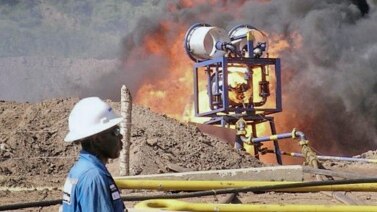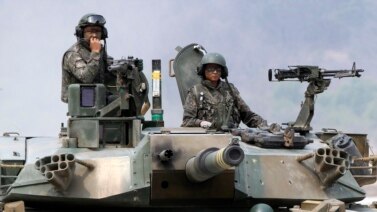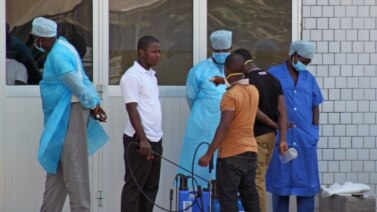
A longtime national security advisor to the United States Congress has said the country’s electric system-- called a “grid” -- is mostly unprotected.
Peter Vincent Pry believes North Korea is ready to attack the U.S. electric grid using electromagnetic pulse, or EMP. He said North Korea tested the plan last year when it put a satellite into orbit. The satellite was in a position where it could carry out such an attack against the United States.
Mr. Pry was a member of the former Commission to Assess the Threat to the United States from Electromagnetic Pulse Attack. He is the executive director of the Task Force on National and Homeland Security. It advises Congress on how to protect the United States from electromagnetic pulse attacks and other threats.
An electromagnetic pulse is a short “burst” of electromagnetic energy. It can be natural or created by humans. EMP bursts from lightning can damage electronic equipment. At very high levels, an EMP can damage trees, buildings and aircraft.
Mr. Pry said North Korea tested EMP in February of 2013 over the South Pole. The test was done after the country’s third illegal nuclear test.
Later in 2013, a North Korean cargo ship was stopped as it carried missiles through the Panama Canal. The missiles were hidden under thousands of bags of sugar.
Mr. Pry said this was not a mistake by North Korea. He believes North Korea was testing to see if it could send nuclear weapons through the Gulf of Mexico and the Panama Canal without being caught.
He said “we inspected the freighter not because anyone thought there were nuclear-capable missiles on board, but because this freighter is notorious for doing trade with drug cartels and terrorists, and so we were looking for illicit drugs that the freighter might be smuggling, and they found the nuclear-capable missiles.”
Rep. Yvette Clarke of New York is the senior Democrat on the Homeland Security Subcommittee on Emerging Threats, Cybersecurity, Science and Technology.
She said she did not know North Korea purposely acted, in her words, “to test out or test run the capabilities of approaching” the United States with nuclear-capable missiles. But, she said she is, again in her words, “sure it is not for the sake of friendly trade, but to do our nation harm.”
Mr. Pry said a group of Russian generals and two of Russia’s top EMP experts met with the EMP commission in 2004. The Russians talked about the development of a technology for a high-energy EMP attack near the end of the Cold War. It was a kind of nuclear weapon that would produce a very powerful electromagnetic pulse.
The Russian generals told the commission, “We have bad news. We developed this super EMP weapon, and during the post-Cold War brain drain, some of our scientists went to North Korea.”
At the time, Mr. Pry said, the Russian generals told them that North Korea could develop a super EMP weapon within a few years.
I’m Caty Weaver.
This story is based on reporting by VOA reporter Kells Hetherington in Washington. It was adapted for Learning English by Christopher Cruise and edited by Hai Do.
Words in the News
system – n. a method of organizing or doing something by following rules or a plan; a group of connected things or parts working together for a common purpose or goal
position – n. a place; the way of holding the body; the way a thing is set or placed; a job (or level of a job) in an organization
damage – v. to cause injury or destruction; n.harm, hurt or injury usually to things
mistake – n. a wrong action or decision; an action done without the knowledge it was wrong
powerful – adj. having the ability to control or influence people or things; having a strong effect on someone or something; having or producing a lot of physical strength or force
Now it’s your turn to use these Words in the News. In the comments section, write a sentence using any of these words and we will give you feedback on your use of vocabulary and grammar.





